How to Make Insanely Crispy Air Fryer Banitsa (It’s Way Easier Than You Think)
I learned to make banitsa the old-fashioned way, in a kitchen filled with family, where the process was a time-honored tradition. The matriarch of the family would spend an entire morning stretching her own pastry so thin you could practically read through it. The whole apartment would smell of melting butter and savory, tangy cheese. It was baked in a massive pan in a regular oven until it was perfectly, deeply golden.
In this article
So, you can imagine the skeptical looks I got when I first suggested trying it in an air fryer. To them, this was almost heresy. But when they took a bite of that first air-fried roll and heard that incredible, shattering crunch… well, a slow nod of approval was all the validation I needed. This modern gadget could absolutely do justice to a classic dish.
Banitsa is a huge deal in many parts of Eastern Europe—it’s a holiday centerpiece, a grab-and-go breakfast, and a symbol of warm hospitality. At its core, it’s a savory pie made with layers of super-thin pastry, a rich filling of eggs and cheese, and a generous amount of butter. My version adds a little twist with dried mushrooms for an earthy depth, but the soul of the dish is the same. This guide is more than just a recipe; it’s all the tips and tricks I’ve picked up over the years, for both the oven and, my new favorite, the air fryer.
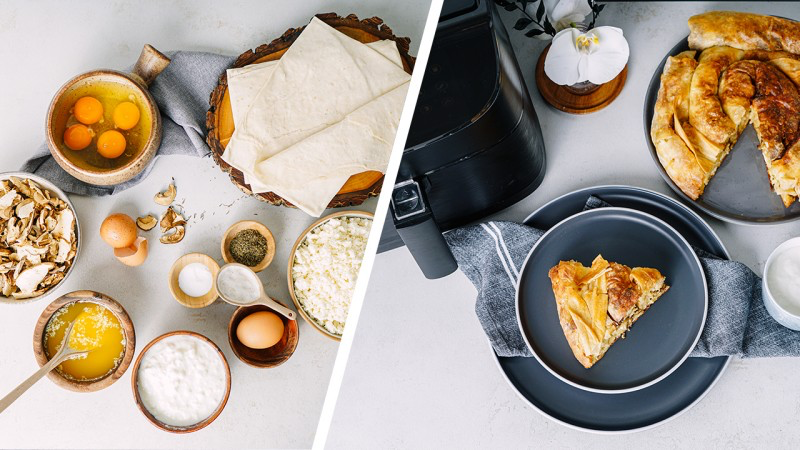
First, Here’s What You’ll Need
Before we get into the nitty-gritty, let’s talk ingredients. Getting this part right is half the battle. This is what you’ll need for a standard-sized banitsa that fits perfectly in most air fryer baskets.
For a single 16oz package of filo dough, you’ll need:
- Filo Dough: One 16-ounce package, thawed. You can find this in the freezer section of most grocery stores for around $4-$5. Let it thaw in the fridge overnight—don’t rush it on the counter!
- Cheese: About 1 pound of crumbled Bulgarian sirene or a good quality feta.
- Eggs: 4 large ones.
- Yogurt: 1 cup of full-fat plain Bulgarian or Greek yogurt.
- Baking Soda: 1 teaspoon.
- Butter: ½ cup (that’s one stick) of unsalted butter, melted.
- Optional flavor boost: A handful of dried porcini mushrooms, rehydrated in hot water and finely chopped.
Oh yeah, a quick word on total time. From gathering your ingredients to pulling that golden, crispy spiral out of the air fryer, plan for about 75 to 90 minutes. It’s a bit of a project, but trust me, it’s so worth it.
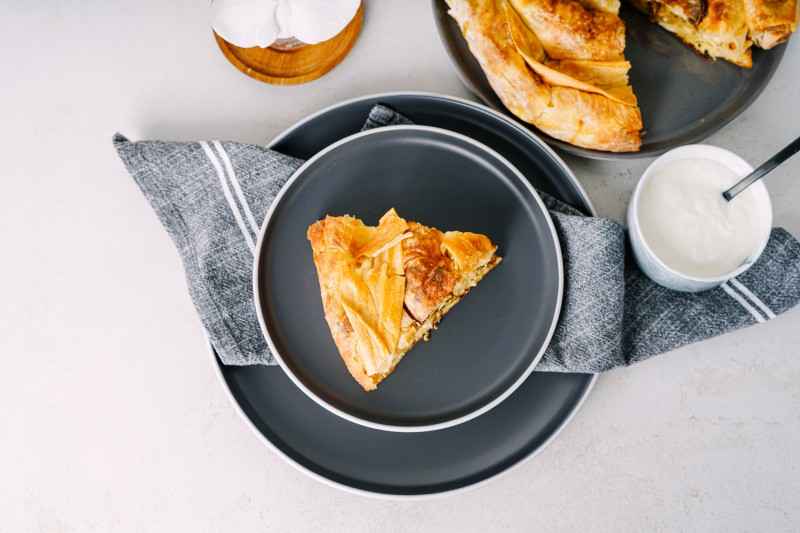
The Soul of a Great Banitsa: The Ingredients
A truly memorable banitsa comes down to a few key players. Understanding what they do makes you a better cook, not just a recipe-follower.
The Pastry: Your Foundation of Flakiness
The star of the show is the paper-thin pastry, often sold as filo or phyllo dough. When you buy it, look for a package that feels pliable, not brittle and dry. If it’s been handled poorly, it’ll just crack and be a pain to work with.
The magic happens when you brush these super-thin sheets with fat (butter, in our case) and layer them. As it bakes, the water in the dough and filling creates steam, pushing the layers apart. This is what gives you that light, flaky, shatter-crisp texture. And honestly, the intense, circulating heat of an air fryer is a rockstar at this, making the pastry exceptionally crunchy.
The Cheese: It’s All About the Brine
The traditional cheese here is a brined white cheese called sirene. It’s often compared to feta, but it’s typically creamier with its own unique tangy kick. It’s the heart of the flavor. You can usually find real imported sirene at European or Mediterranean markets, and it might set you back between $10 and $15 for a good-sized block. It’s worth it if you can find it!
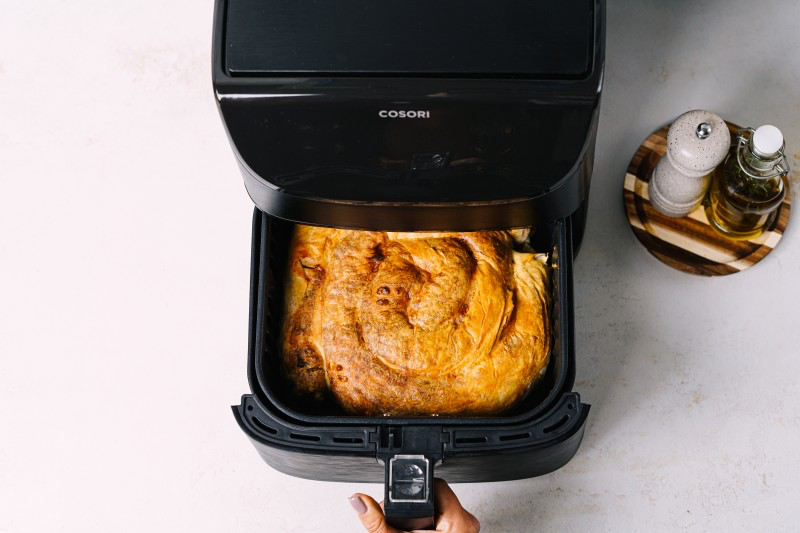
But don’t worry if you can’t. A high-quality sheep’s milk feta packed in brine is a fantastic substitute and way easier to find, usually for around $6 to $8. Just avoid the dry, pre-crumbled stuff—it lacks the moisture and complex flavor we need. The brine is key! Give it a taste before you use it; if it’s super salty, just give it a quick rinse under cold water and pat it dry.
The Filling Activator: A Little Kitchen Science
Okay, this is the cool part. We mix yogurt and baking soda into the eggs, and it’s not just for taste. It’s a clever leavening system. The yogurt is acidic, and when you mix it with baking soda (an alkali), you get a chemical reaction that creates tiny carbon dioxide bubbles.
As the banitsa bakes, these bubbles expand in the heat, transforming the filling from a dense, boring omelet into something light, airy, and almost like a savory custard. It puffs up beautifully between the pastry layers. It’s a simple trick that makes a huge difference.
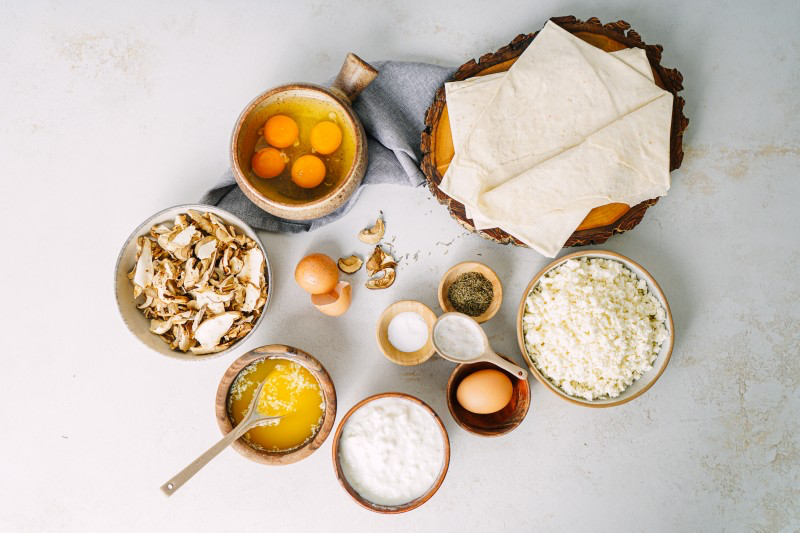
Putting It All Together Like a Pro
How you assemble this thing matters. It requires a gentle touch, but you also have to work with confidence. It’s a balancing act.
Get Your Station Ready (Mise en Place!)
This is the most important first step, I swear. Before you even think about unwrapping that delicate filo dough, have everything ready to go. Seriously, this will save you so much stress.
Have your bowls ready: one with the egg, yogurt, and soda mixture whisked together; one with your crumbled cheese; another with your chopped mushrooms (if using); and a small bowl of your melted butter with a pastry brush. And of course, have your air fryer basket handy. Filo dough dries out in minutes, so a quick tip from the pros is to cover the stack of filo with a clean, slightly damp kitchen towel while you work with one sheet at a time.
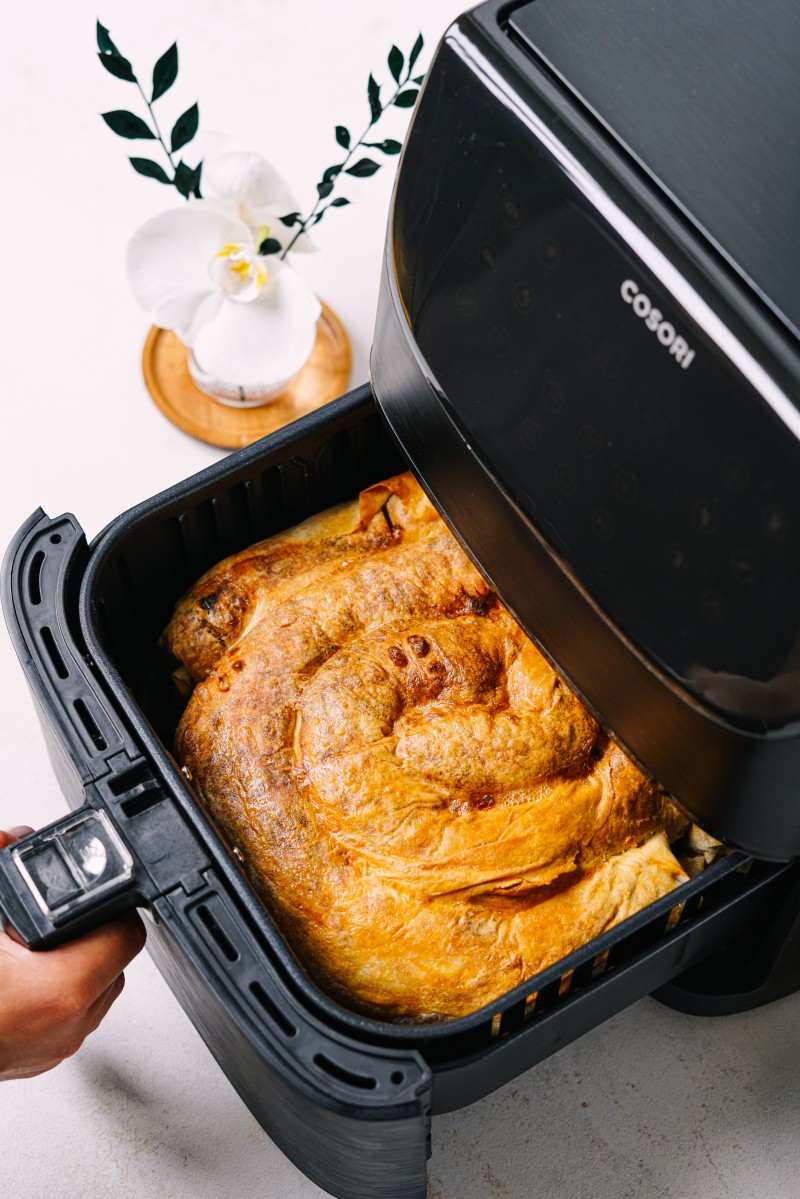
The Art of the Roll
We’re making a rolled banitsa, which looks like a beautiful spiral. Here’s how you do it, step-by-step:
- Lay out one sheet of filo. Don’t worry about small cracks or tears—they’ll get hidden inside.
- Brush it lightly with butter. You don’t need to soak it, just a thin, even coat.
- Spoon on the filling. Add a few tablespoons of the egg/yogurt mix and spread it thinly with the back of a spoon. Avoid big puddles!
- Sprinkle on the good stuff. Evenly scatter some crumbled cheese and mushrooms over the top.
- Fold and Roll. Fold the left and right sides in by about an inch to seal the ends. Then, starting from the edge closest to you, roll it up into a long, thin log. Keep it firm but not so tight that the filling will burst out when it expands.
Pro-tip for first-timers: Don’t worry if the filo rips! It’s super delicate, and my first few attempts looked a total mess. Just patch it up and keep rolling. I promise it will still taste incredible once it’s baked.
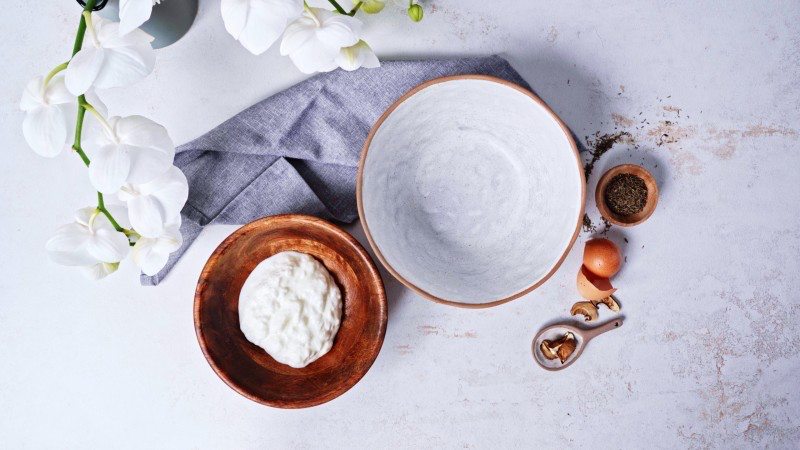
Once you have a log, just carefully coil it into a spiral, like a snake, and place it in your air fryer basket. For a smaller air fryer, you might need to make two or three smaller rolls instead of one giant one. This is actually a great way to start, as the smaller rolls cook a bit faster (around 15-18 minutes) and are perfect for a single serving.
Air Frying to Crispy Perfection
An air fryer works with powerful circulating hot air, which is amazing for getting things crispy, fast. But that power needs to be controlled.
The Temperature and Time Sweet Spot
I recommend baking at 320°F (160°C). This might seem a little low for an air fryer, but it’s on purpose. If you go hotter, the thin pastry will burn before the egg filling in the center has a chance to fully cook and set. The goal is a golden, flaky crust and a light, cooked interior.
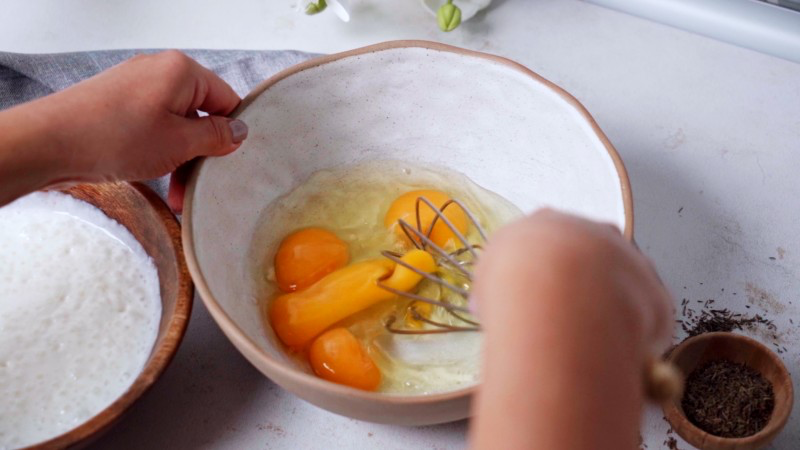
Total cooking time is usually 20-25 minutes. But every air fryer is a little different, so start checking it around the 18-minute mark. It’s done when the top is a deep golden brown and feels crisp and firm to the touch.
Heads up! The top of your banitsa will cook much faster than the bottom because the heating element is up there. About halfway through cooking (around 12 minutes in), you MUST carefully flip the whole coil over. Use two spatulas to lift and turn it. This step is essential for a perfectly cooked, crispy bottom.
Storing, Reheating, and Serving
Banitsa is hands-down best when it’s fresh and warm. But leftovers are still amazing if you treat them right. Let it cool completely, then store it in an airtight container in the fridge for up to 3 days.
Whatever you do, DO NOT reheat it in the microwave. It will turn that beautiful, crispy pastry into a soft, steamy, sad mess. The best way to bring it back to life is right back in the air fryer for a few minutes at 320°F (160°C). It’ll be almost as good as new.
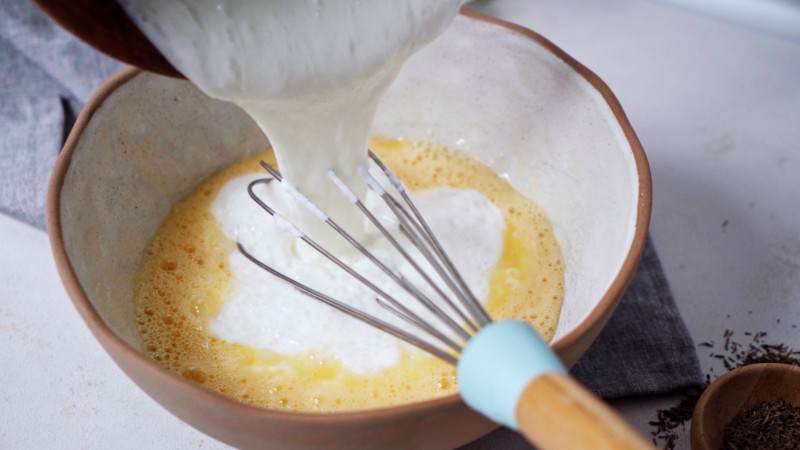
For serving, the classic pairing is a cool, refreshing glass of ayran. It’s a simple yogurt drink that cuts through the richness of the pastry perfectly. To make it yourself, just whisk 1 cup of plain full-fat yogurt, 1 cup of cold water, and a pinch of salt until it’s smooth and frothy. That’s it!
So, your mission, should you choose to accept it: Make this banitsa this weekend! Drop a comment and let me know how it went. Did you stick to the classic, or did you get creative with the filling? Happy cooking!
Inspiration:
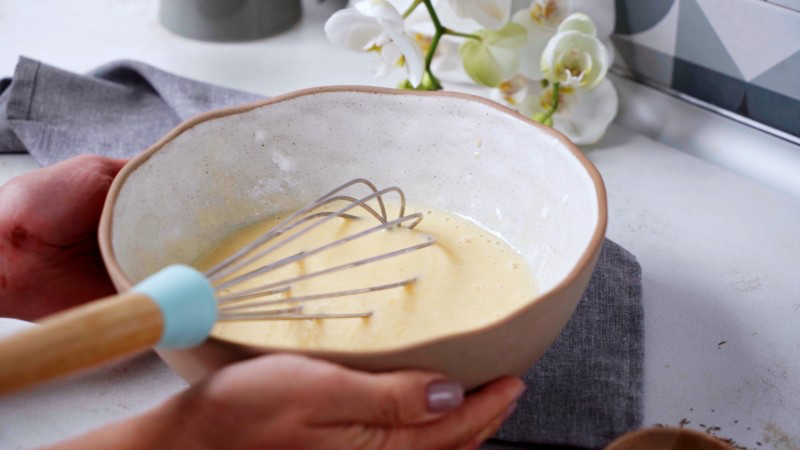
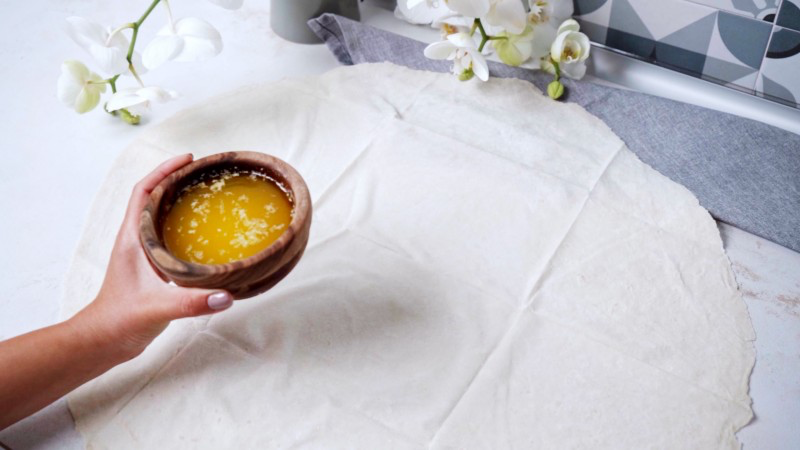
The Filo Foe: Dryness. Once that package is open, filo dough is notorious for drying out in minutes. To prevent it from becoming brittle and cracking, keep the stack of sheets you aren’t actively working with covered by a clean, slightly damp kitchen towel. Work swiftly but gently!
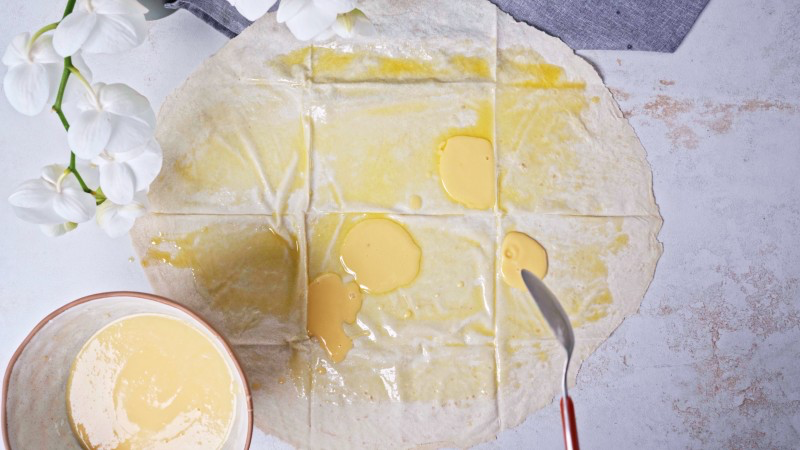
Sirene vs. Feta: Sirene, the traditional Bulgarian cheese, is a brined white cheese that’s often creamier and has a distinct tangy ‘bite.’ Greek feta is typically firmer, crumblier, and saltier. For authenticity, look for Bulgarian sirene (brands like KREST or DZIΝTAR are great finds), but a high-quality sheep’s milk feta packed in brine is an excellent and widely available substitute.
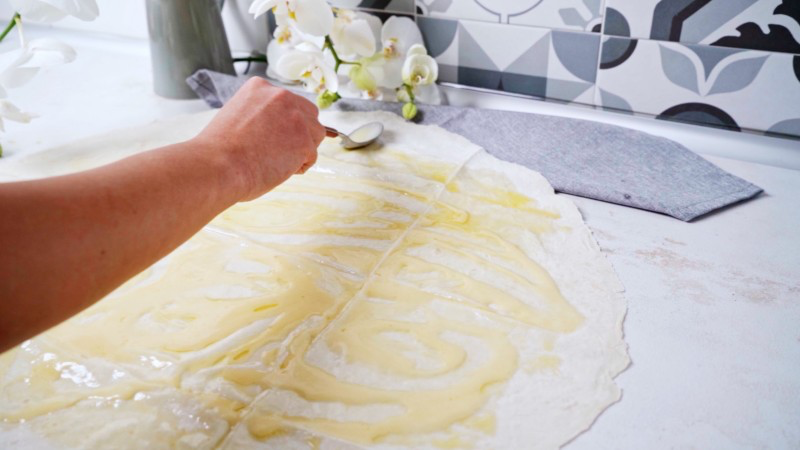
Looking to experiment with the filling? The classic cheese is divine, but banitsa is wonderfully versatile. Try these popular variations:
- Sweet & Autumnal: A mix of pumpkin puree, walnuts, and a sprinkle of cinnamon.
- Hearty Greens: Sautéed spinach or leeks mixed with the cheese and egg base.
- Meat Lover’s: Pre-cooked ground meat (beef or lamb) with onions and savory spices.

On New Year’s Eve in Bulgaria, it’s tradition to hide ‘kusmeti’ (good luck charms, often dogwood branches with buds) inside the banitsa. Each charm corresponds to a different fortune for health, love, or success in the coming year!
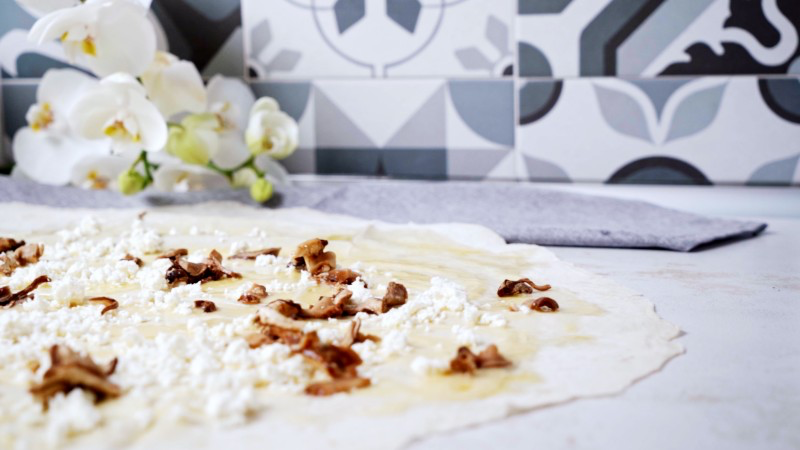
Struggling with a soggy bottom?
The key to avoiding a soft, undercooked base in the air fryer is twofold. First, ensure your filling isn’t overly wet; if your yogurt or cheese seems very liquid, let it sit in a strainer for a few minutes. Second, preheating your air fryer is non-negotiable. Placing the banitsa into an already hot basket, ideally on perforated parchment paper, helps to set and crisp up the bottom layer almost instantly.
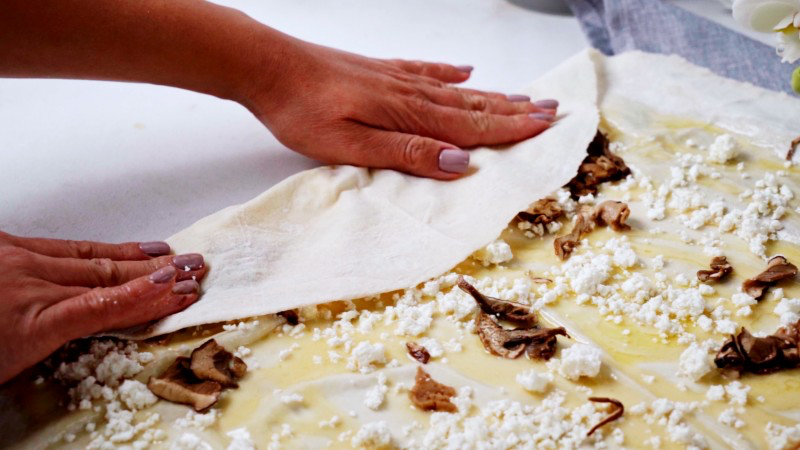
For an authentic serving experience that preserves the texture, don’t slice the banitsa with a knife like a cake, as it can crush the delicate, flaky layers. Instead, use your hands or two forks to pull apart rustic, satisfying portions. It’s often served warm alongside a glass of Ayran (a savory yogurt drink) or a cup of plain Bulgarian yogurt.
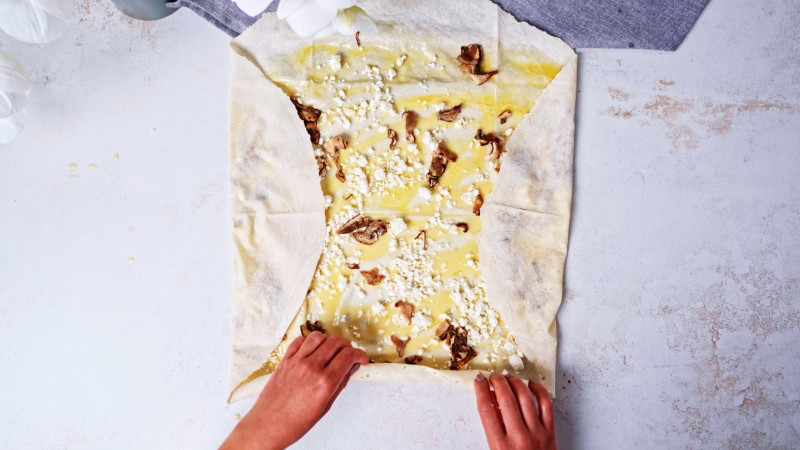
- An ultra-crispy top crust that doesn’t burn.
- Evenly cooked, tender layers all the way through.
- Effortless cleanup with no sticking to the basket.
The secret? Air fryer parchment liners. Using a perforated parchment sheet specifically sized for your air fryer basket is a game-changer. The holes are essential for allowing hot air to circulate freely, ensuring a perfectly baked pastry while preventing the delicate filo from sticking or falling through the grates.
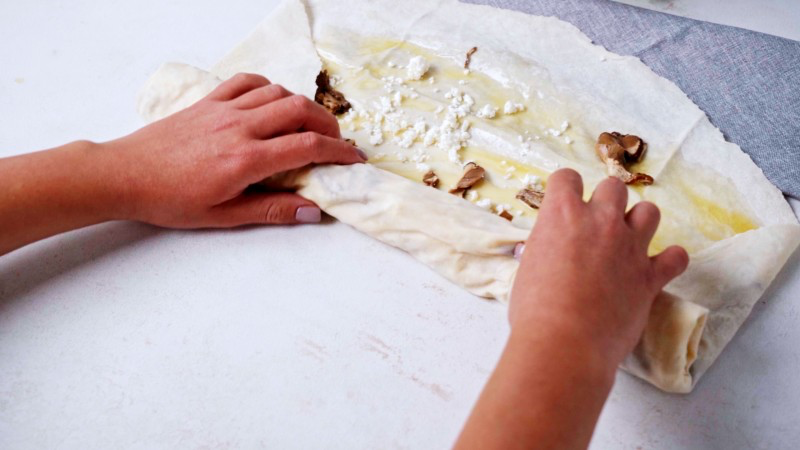
Over 60% of U.S. households now own an air fryer, according to market research from NPD Group.
This explosion in popularity is fueling a renaissance of classic, oven-baked dishes. The air fryer’s powerful, circulating hot air is uniquely suited to creating an incredibly even, crackling crust on pastries like banitsa, achieving bakery-quality results in less time and often with less energy than a conventional oven.
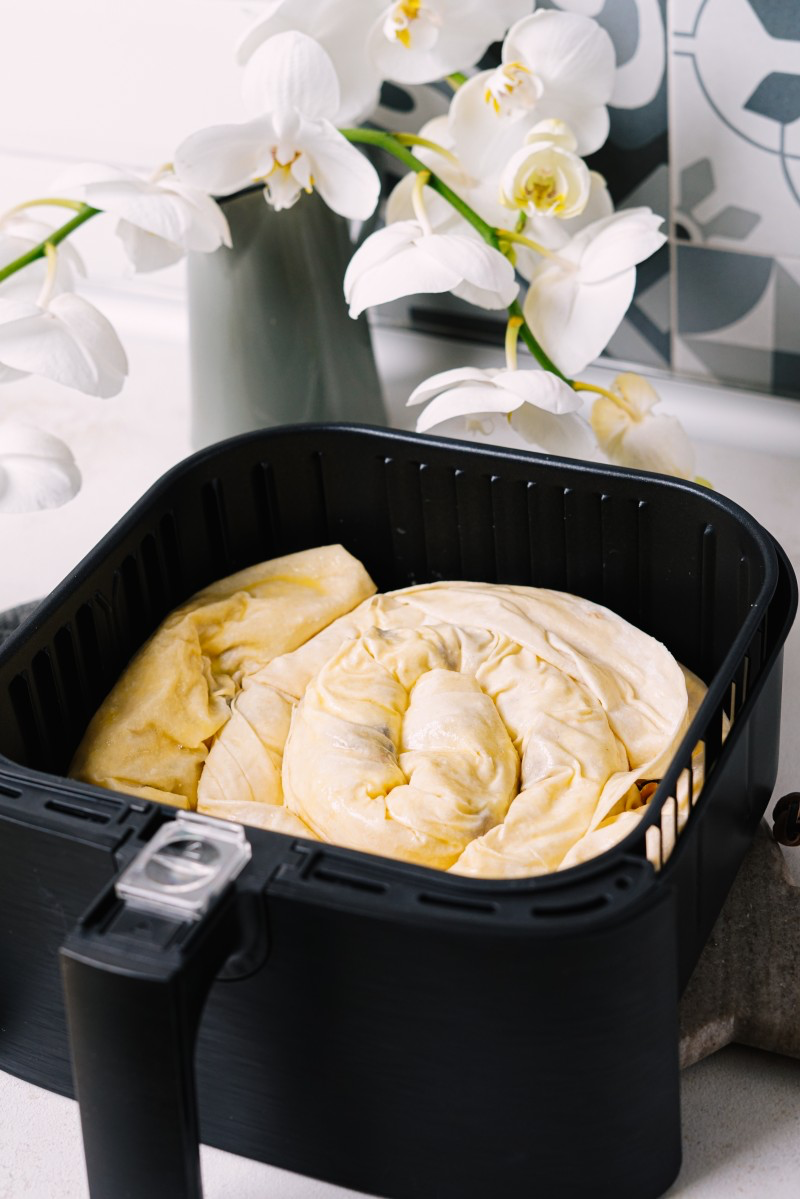
Don’t let leftover filo dough go to waste! Once opened, it needs to be used quickly. Here are some ideas:
- Brush sheets with melted butter, sprinkle with cinnamon sugar, and air fry for 3-4 minutes for quick dessert crisps.
- Cut into strips, brush with garlic butter and parmesan, twist, and air fry to make savory breadsticks.
- Press sheets into a muffin tin to create elegant, crispy cups for holding appetizers or mini quiches.
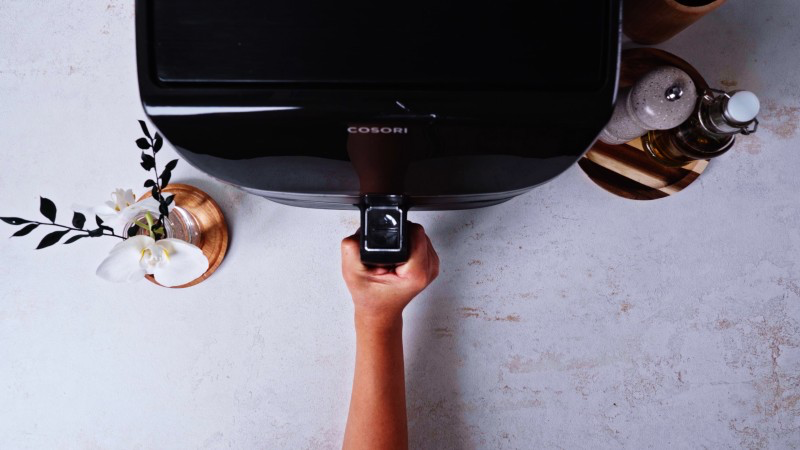
Is Banitsa similar to other famous pastries?
Absolutely! It belongs to a delicious family of layered pastries found throughout the Balkans, Eastern Europe, and the Middle East. It’s a close cousin to Greek Spanakopita (often with spinach), Turkish Börek (which comes in countless shapes and fillings), and Serbian Gibanica. They all share the magic of paper-thin dough and rich, savory fillings, showcasing regional culinary history.
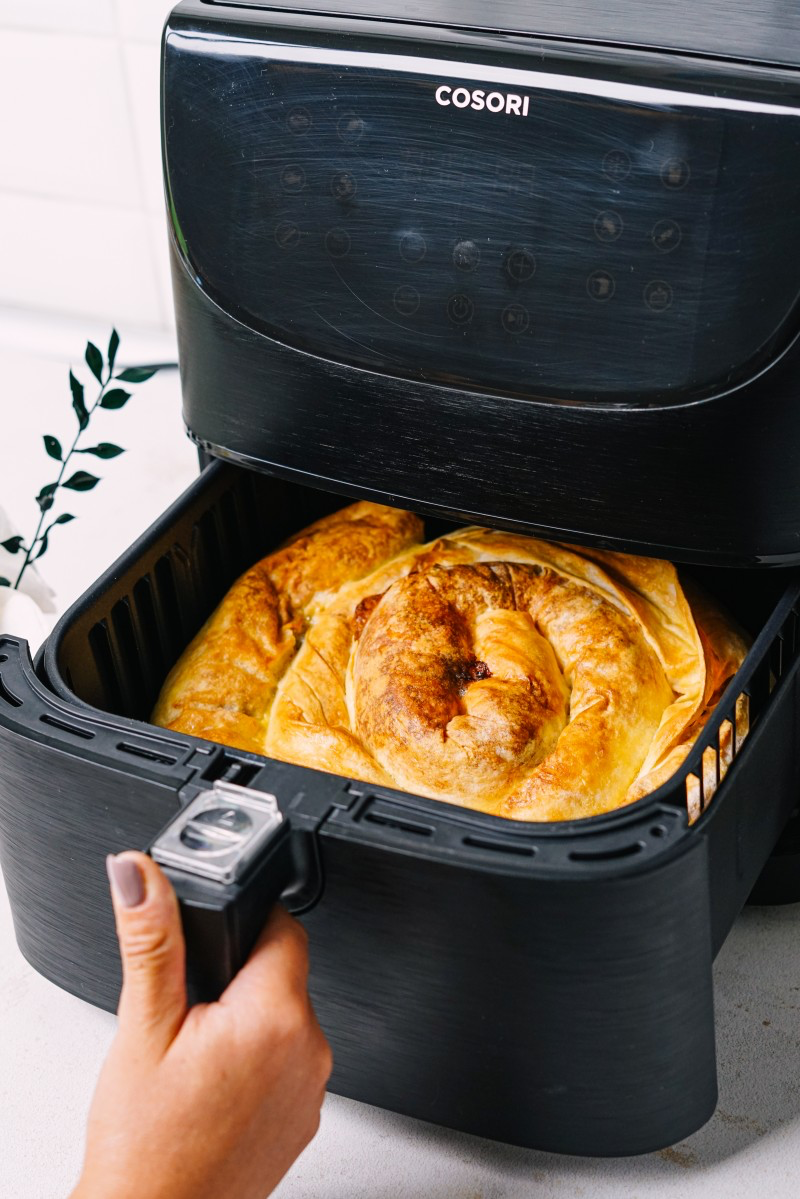
The type of yogurt used is more important than you might think for achieving that authentic taste. Traditional Bulgarian yogurt (kiselo mlyako) is fermented with Lactobacillus bulgaricus, a unique culture that gives it a characteristic tartness and thick consistency. This tang perfectly cuts through the richness of the butter and cheese. If you can’t find it, a full-fat (at least 5%) Greek yogurt is the next best choice for a creamy, dense texture.
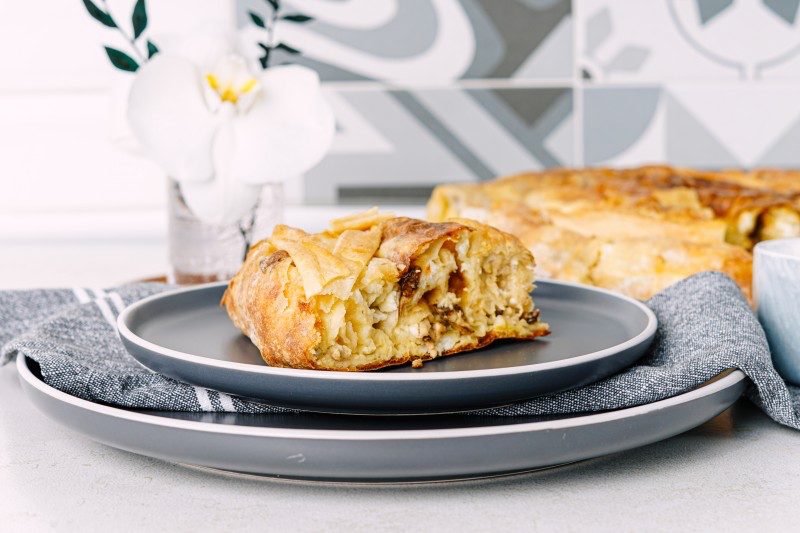
Important tip: Let your filo dough thaw properly. Rushing this step is the fastest way to frustration. The ideal method is to move it from the freezer to the refrigerator a full 24 hours before you plan to use it. Thawing it on the counter can make the outer layers warm and gummy while the inside remains frozen, causing the delicate sheets to tear and stick together.
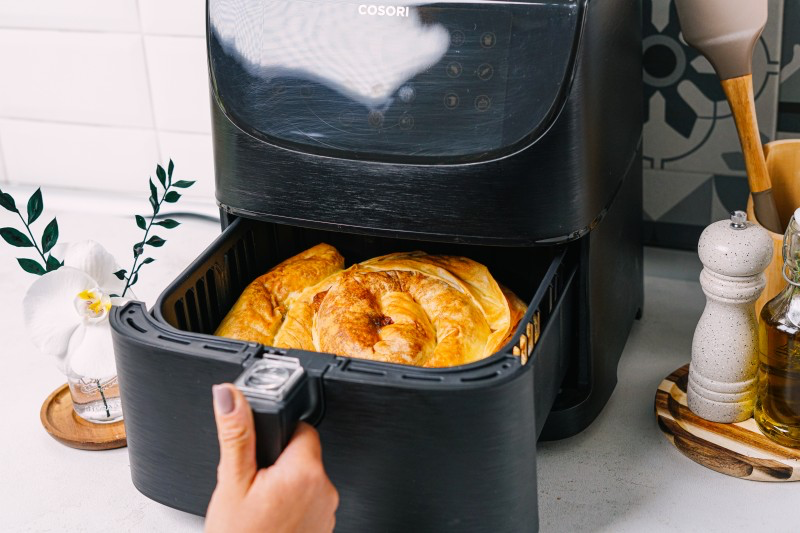
Wondering about leftovers? They’re fantastic, but only if you reheat them correctly to revive that signature crunch.
- Store completely cooled banitsa in an airtight container in the fridge for up to 3 days.
- To reheat, place a slice directly in the air fryer basket at 350°F (175°C) for just 3-5 minutes. It will emerge almost as crispy as when it was first baked. The microwave is the enemy of crispiness here!
Air Fryer Size Matters: For this recipe, a larger capacity air fryer (6-quart or bigger), like a Ninja Foodi or Cosori Pro, is ideal as it can fit a decent-sized spiral without crowding. If you have a smaller, basket-style air fryer, consider making individual, cigar-shaped rolls instead of one large coil to ensure even cooking and maximum crispiness all around.










